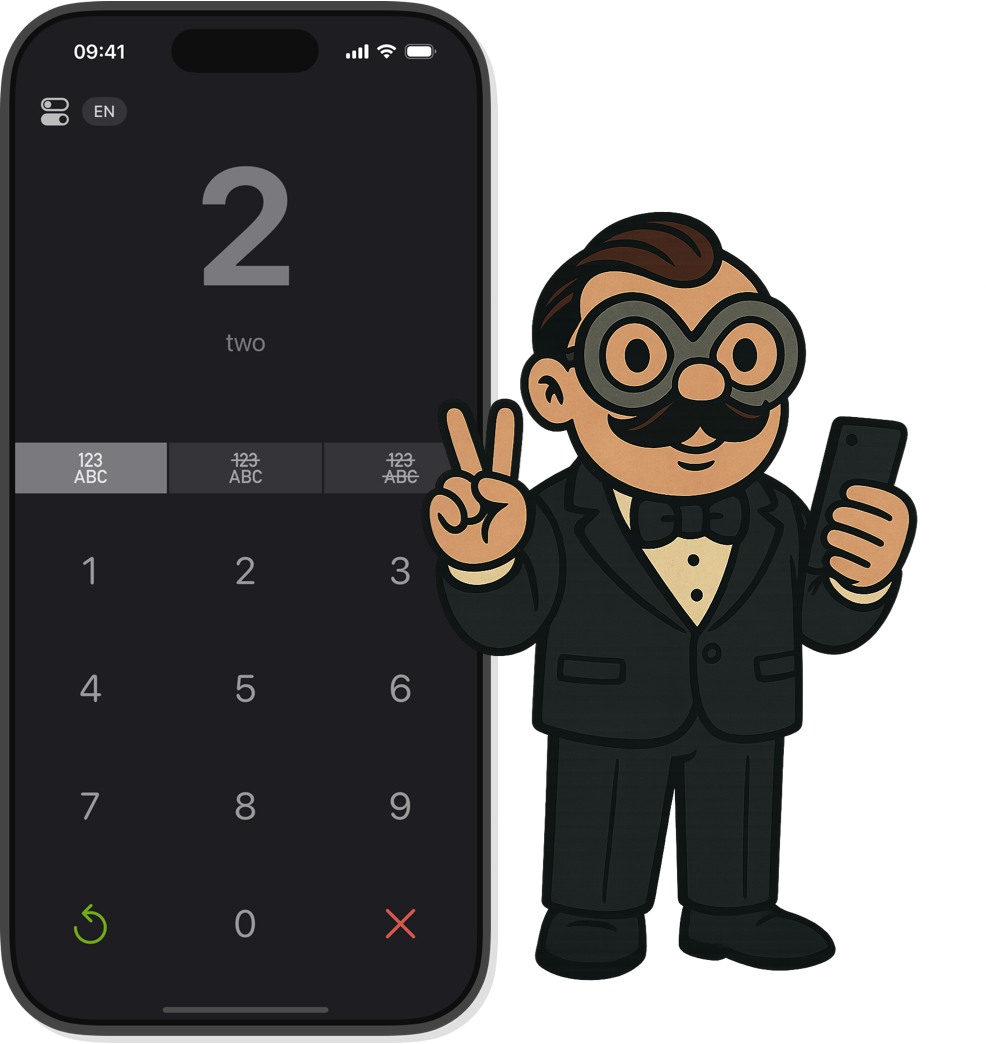Italian Numbers from 1 to 100: Number System, Common Pitfalls & Tips
In this guide, you'll find practical rules, common pitfalls, and examples for Italian numbers.


How Italian Numbers Are Structured
The Italian number system is logical and systematic, but has some unique features in spelling and pronunciation.
- 1-10
-
Basic numbers: uno, due, tre, quattro, cinque, sei, sette, otto, nove, dieci
These basic numbers must be memorized. They form the foundation for all other numbers.
- 11-16
-
Ending in "-dici": undici, dodici, tredici, quattordici, quindici, sedici
Numbers from 11 to 16 are formed by placing the unit digit (with slight modifications) before ten (dieci), resulting in the "-dici" ending.
- 17-19
-
Starting with "dici-/dicia-": diciassette, diciotto, diciannove
Here ten is placed first: dieci + sette/otto/nove (in diciotto a vowel is dropped).
- 20-99
-
Tens + units: ventuno, trentadue, sessantotto
Numbers are written as one word. When the unit begins with a vowel (uno, otto), the final vowel of the tens digit is dropped: venti + uno → ventuno. When the unit ends in -tre, an accent is added: ventitré.
- 100
-
One hundred: cento
- 101+
-
Combined without "and": centouno, duecentoventicinque
Numbers are simply attached to cento without a connecting word.
Italian Numbers from 1 to 100
Complete overview of all Italian numbers from 1 to 100. Perfect for systematic learning and quick reference.
Test Your Italian Number Skills
Can you match these numbers correctly? How confident are you with Italian numbers from 1-100?
Pro tip: App for targeted number training. Did you know there's an app dedicated exclusively to numbers in foreign languages? With the Numfred App, you can specifically learn Italian numbers.
Learn Italian numbers with the Numfred App!
The app designed to help you master listening comprehension for numbers in foreign languages.
- Free basic number ranges
- Learn numbers in 13 languages
- No subscription. No registration.
- Ad-free
Hundreds, Thousands and Large Numbers
Italian numbers are written as one word. For large numbers, a period is used as a thousands separator.
- 100
-
cento
- 1,000
-
mille
Special feature: In plural, mille becomes mila.
duemila (2,000), tremila (3,000) etc. - 1,000,000
-
un milione
- 1,000,000,000
-
un miliardo
- 1,000,000,000,000
-
un bilione
Common Pitfalls When Learning Numbers
Hearing or quickly pronouncing numbers can be challenging. These cases often lead to confusion:
-
Dropping the final vowel (Elision):
With the numbers uno and otto, the final vowel of the tens digit is dropped. It's ventuno (not ventiuno) and quarantotto (not quarantaotto). -
Accent on three:
All numbers ending in -tre get an accent: ventitré, trentatré, quarantatré etc. This affects the stress pattern. -
Writing as one word:
Italian numbers up to 100 are always written as a single word. For example: settantacinque (75), novantanove (99).
Understanding and Using Numbers in Daily Life
In spoken Italian, numbers are often pronounced quickly – especially when dealing with:
-
Time:
Sono le tre e un quarto (It's quarter past three)
Sono le cinque meno dieci (It's ten to five)
È l'una (It's one o'clock) -
Money amounts:
sette e ottantanove = 7.89 € -
Years:
1999 → millenovecentonovantanove (as one word)
2012 → duemiladodici
2025 → duemilaventicinque -
Quantities:
un paio di centinaia (a few hundred)
un migliaio (about a thousand) -
Basic arithmetic:
3 + 7 = 10 → tre più sette fa dieci
8 - 5 = 3 → otto meno cinque fa tre
6 × 3 = 18 → sei per tre fa diciotto
12 ÷ 4 = 3 → dodici diviso quattro fa tre -
Fractions and decimals:
½ → un mezzo
¼ → un quarto
8.21 → otto virgola ventuno
Unique Features of Italian Numbers
Italian has certain linguistic conventions and peculiarities when dealing with numbers. Here's an overview of typical characteristics:
-
One word, no hyphens:
In Italian, compound numbers are written as a single word, e.g. quarantacinque (45). Unlike English, which uses hyphens (e.g. forty-five), Italian follows the same pattern as German in writing numbers as one continuous word. -
Changing thousands:
The word for 1,000 is mille. In plural, however, it becomes mila: duemila (2,000), tremila (3,000). The word cento (100) remains unchanged. -
Adaptation of "uno":
The number uno behaves like the indefinite article. Before a masculine noun it becomes un (e.g. un anno), unless the word begins with s+consonant, z, y, x, gn, ps (then uno). Before feminine nouns it becomes una or un' before a vowel. -
Lowercase number words:
Number words are written in lowercase in Italian – except at the beginning of a sentence.
Explore More Languages:


